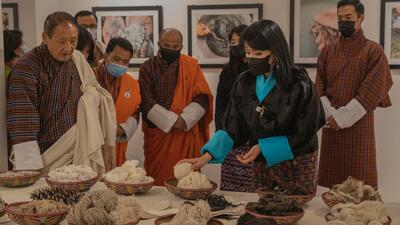The informal economy: Here to stay?
In the 1960s and 1970s, the informal economy was widely expected to shrink with economic growth. Yet in spite of strong global growth and a massive increase in international trade, informal activity appears all the more pervasive. It is now estimated that an average 60% of employment in developing countries is in the informal economy.
The International Labour Organization (ILO) defines informal labour as ‘all economic activities by workers and economic units that are – in law or in practice – not covered or insufficiently covered by formal arrangements.’ In 2002, the ILO concluded that the bulk of new employment in recent years, particularly in developing and transition countries, was in the informal economy.
The informal economy has traditionally been viewed as the last resort for workers who cannot find a job in the formal economy and must, nonetheless, earn a living. But the sector is diverse, notes Martha Alter Chen, who teaches at the Kennedy School of Government at Harvard University and coordinates the global research-policy network Women in Informal Employment: Globalizing and Organizing (WIEGO). It spans home-based producers, casual workers, street vendors, own-account workers and informal employers. Informal workers often produce, distribute or provide services for the formal economy.
The importance of the informal economy in developing countries is starkly illustrated by data from Africa, the continent with the highest concentration of least developed countries (LDCs). In sub-Saharan Africa, three out of four people are unofficially employed; the non-agricultural informal sector creates employment opportunities for 91.5% of women, compared with 70.7% of men.
Harmful to the economy?
Traditionally, a large informal sector is viewed as harmful to the economy. Concerns, from consumer and worker protection, and safety measures to hygiene and other standards, stem from the under-regulated nature of the informal economy. More serious concerns stem from the fact that capital intensity and productivity are considerably lower than in the formal sector. Evidence suggests, for example, that it is often the bigger and more productive companies that benefit from trade liberalization.
Perhaps the most troubling of findings about the informal economy is that it appears to keep the poor entrenched in poverty. Since no real productivity gains are created, the sector is, in effect, a drag on development as well as trade. A recent review of empirical studies suggests that low productivity growth along with income inequality eventually block access to capital, skills and markets.
Observers such as Anushree Sinha, who authored the study on trade and the informal economy for the ILO in October 2011, make a distinction between the dynamic potential of informal enterprises, made famous by Peruvian economist Hernando de Soto, and the low productivity of informal workers, who, whether employed by formal or informal companies, have little access to training or social and legal support.
The potential of the informal economy
Palatable or not, informal work lies at the heart of the employment challenge facing developing countries. LDCs alone will require 10.2 million additional jobs every year from 2005-2015, according to UNCTAD estimates. While the agricultural sector absorbed much of the surplus labour in the past, increasing urbanization and environmental pressures mean that this will no longer be the case. Moreover, in the wake of the global financial crisis, the world economy seems less favourably poised for growth. The profound fiscal and financial uncertainty in many major economies throws up questions for developing countries about the viability of the export-led development route focused on international markets.
‘We really have to shift our thinking,’ says Chen, who along with other WIEGO activists and researchers has been pushing to redefine informality to include not just enterprises that are not legally regulated, but also employment relationships that are not legally protected. ‘The policy challenge is to decrease the costs of working informally and to increase the benefits of working formally.’
While policymakers in Papua New Guinea have recognized the informal sector as a training ground for a class of national entrepreneurs, researchers such as WIEGO’s Chen claim that local and national regulations conspire to undermine micro-businesses, and that this contributes to the ‘missing middle’ – the relative absence in the developing world of the mid-sized enterprises that, in high-income countries, drive half of GDP and more than half of employment.
Working with informal cross-border traders
Informal workers respond enthusiastically to training programmes such as those offered as part of the ITC’s Uganda Women ICBT project, which seeks to enhance the capacity of informal cross-border traders (ICBTs). For Uganda, which has included a gender dimension in its national export strategy, the project made sense given that, in 2009, informal exports were valued at 49% of total export earnings and the fact that the majority of ICBTs are women.
‘They are hungry for information,’ says Angela Strachan, ITC’s Chief for Business Environment. ‘As the project evolved, we saw the potential of these people to evolve.’
Unlike other regional efforts to boost informal trade, the ITC pilot project addressed the gender dimension of the issue, tackling technical barriers to trade by training and organizing the informal traders, and working with border agencies to make information more accessible and to limit harassment, often of a sexual nature. The ensuing capacity trade programmes along with document simplification and other efforts attempt to streamline export transactions that, according to the 2010 World Bank Doing Business report, are among the slowest and most expensive in the world. Non-tariff barriers to trade include non-transparent export regulations, undue delays at borders, and a lack of transit and storage facilities for perishable goods.
With support from Uganda’s Revenue Authority, Uganda Customs and some local banks, the project will soon be expanded to the East African Community, one of the continent’s most rapidly growing regional economic communities, an indication of its importance to regional integration. As a majority of the women are involved in agribusiness, the project offers the potential to nurture women informal traders as contributors to regional supply chains.
‘The business proposition is not being denied,’ says Strachan, adding that the next phase will be work with ITC partner the Uganda Export Promotion Board (UEPB) to handhold those who have productive capacity, with the ultimate aim of growing their businesses into micro-, small- and medium-sized enterprises.
Trade provides 60% of non-agricultural self-employment to women in sub-Saharan Africa. Moreover, studies show that in West and Central Africa, women informal cross-border traders have been found, on average, to employ 1.2 people in their home business, to support 3.2 children and to support 3.1 dependents who are not children or spouses.
These figures support the growing understanding that regional trade may well be a better prospect for developing countries than the North-South, export-led growth model that is already so familiar. No wonder, then, that Strachan’s closing message to ICBTs was: ‘The money is within your own environment.’
Informal Work around the World
Fact file
• In 2010, the pervasiveness of the informal economy in sub-Saharan Africa prompted the Economic Commission of Africa (ECA) to conclude that informal trading activities ‘cannot continue to be perceived as structural anomalies that hinder growth and weaken modern economies.’
• In October 2011, the Trades Union Congress-Ghana communicated its concern that only a tiny fraction of school leavers find jobs in the formal economy, part of the accelerated growth of informality that has taken place in the last three decades. Nearly 9 million Ghanaians, more than 80% of the workforce, work in the informal sector.
Evolving Perceptions of the Informal Economy
Courtesy Martha Chen
| The new view | The old view |
| The informal sector is the traditional economy that will wither away with modern industrial growth. | The informal economy is here to stay and is expanding with industrial growth. |
| It is only marginally productive. | It is a major provider of employment. goods and services for lower and income groups, and contributes a significant share of GDP. |
| It exists separately from the formal economy. | It produces for, trades with, distributes for and provides services for the formal economy. |
| It represents a reserve pool of surplus labour. | Much of the informal rise in employment is due to the decline in formal employment or to the iformalization of employment relationships. |
| It is composed mostly of streets traders and other very small producers. | It includes a wide range of informal occupations. |
| Informal workers run illegal and unregistered enterprises in order to avoid regulation and taxes. | Informal workers are self-employed people producing legal goods and services through irregular or unregulated means. |
| Informal work is composed mostly of survival activities, and thus is not a subject for economic policy. | Survival activities exist, as well as stable enterprises and dynamic growing businesses. |










